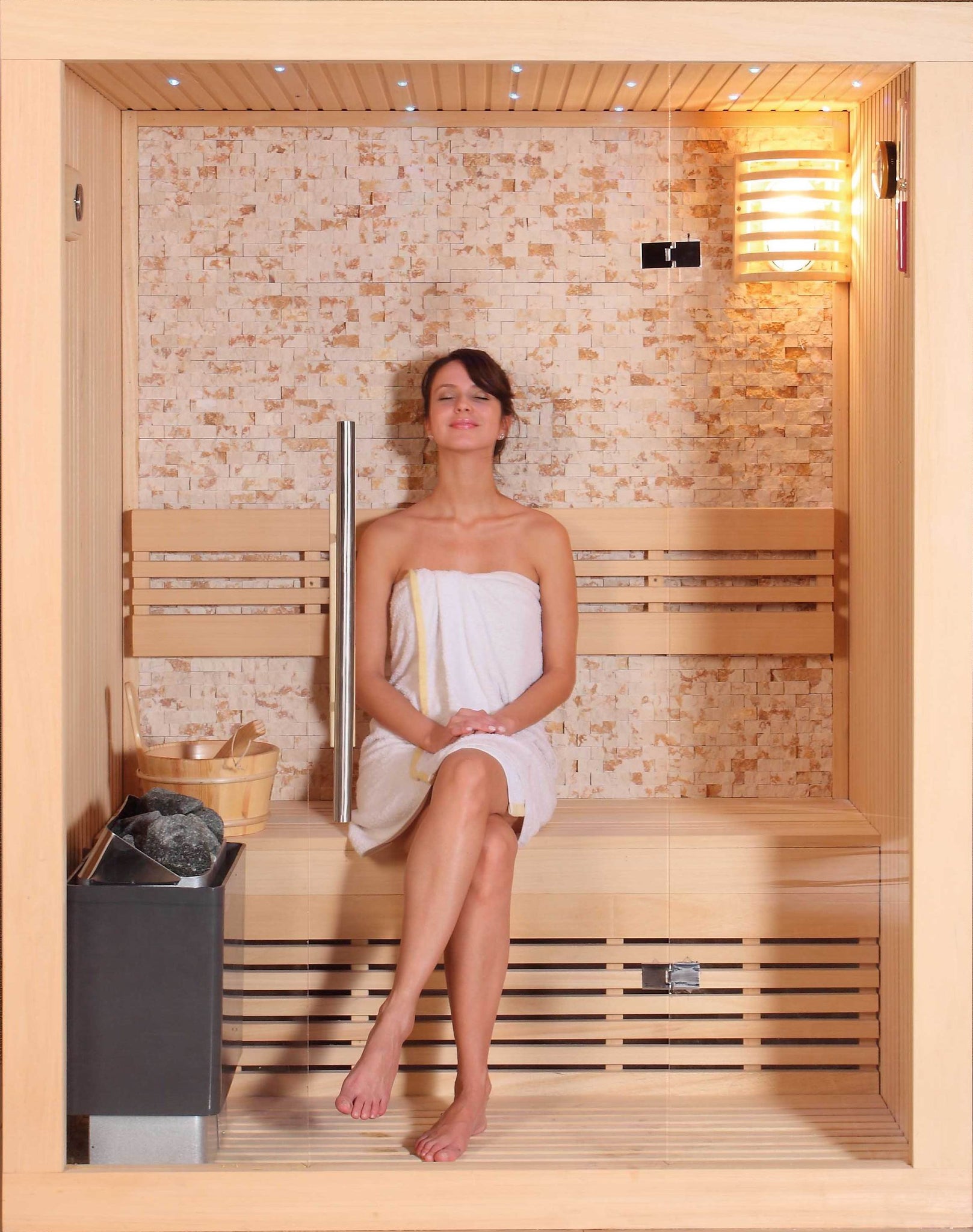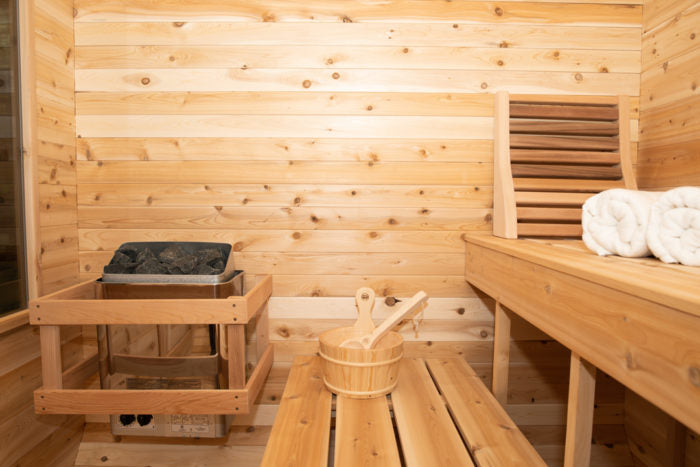Excitement About Traditional Sauna
Excitement About Traditional Sauna
Blog Article
Little Known Facts About Traditional Sauna.
Table of ContentsThe Facts About Traditional Sauna Revealed5 Easy Facts About Traditional Sauna DescribedSome Of Traditional SaunaThe Definitive Guide for Traditional SaunaAll about Traditional Sauna
Most of the weight shed in a sauna is water loss and is re-gained upon rehydrating. Nevertheless, without an uncertainty sauna can be a fundamental part of a healthy fat burning program. To consider the differences between conventional and IR saunas, I will certainly separate these into proven, academic, and made distinctions.Thus, the hottest factor in the saunawhich goes to the ceiling straight over the sauna heateris typically in between 185 and 190 F. Claims that a typical sauna surpasses 200 F is merely not real and not suitable for electric saunas sold in the US. The temperature level for a far-infrared sauna is generally established in between 120 and 140 F; nonetheless, unlike the typical sauna, the objective in and IR room is not to attain a high temperature level.
Due to this, the temperature difference is almost unimportant, because profuse sweating leads to both sauna kinds, but the method of heating up the body is different. In an IR sauna the bather will certainly really feel warm and will sweat a lot, however at a lot lower temperatures (Traditional Sauna). Hence, if the objective is to invest longer time periods in the sauna, the IR sauna is a good selection
When a traditional sauna has actually been properly heated up, the sauna walls are cozy, the air temperature has actually attained established temperature level and the rocks are super warmed. As an interesting side note, the warmed walls and the rocks are releasing far-infrared warmth, combined with the heated air, to produce an "wrapping up heat".
Things about Traditional Sauna

When the high temperature is achieved, the aspects cycle on and off to keep the high temperature level. A lot of traditional sauna users delight in pouring water over the rocks to produce heavy steam to increase sauna humidity degrees. The advantages of putting water over the rocks include: making the room extra comfy, dampening the nasal passages, and enabling the use of aromatherapy by blending crucial oils with the water.

When the energy goes into the body, it creates the body temperature to increase and eventually leads to sweat. In an infrared sauna it's important for the emitters/heaters to continue to be on almost frequently. Considering that there is no mass of rocks to preserve heat, the sauna will certainly cool down if the emitters shut down.
As pointed out above, the sauna bather in an infrared area intends to place himself before operating emitters to obtain optimal take advantage of the warm. The heating time for the two spaces can be really various, depending upon exactly how the spaces are used. For a typical sauna, a bather needs to allow 30-40 mins for the space to achieve a wanted temperature and to properly pre-heat the rocks.
Traditional Sauna Fundamentals Explained
A well created sauna will commonly attain a temperature of 150-160 F in regarding 30-40 minutes. For hotter temperature levels, the room might require to warmth for a longer period.

Typical saunas tend to go to website be bigger (therefore make use of even more electrical energy) than infrared saunas, although traditional saunas are absolutely readily available in one and two person sizes also. For a two-person typical sauna, 5x6 or 5x7 dimension is most preferred. The leading bench can easily seat two or 3 people and is likewise long enough to rest during the sauna session.
Our Traditional Sauna Statements
The ordinary price per kWH of electrical energy in the united state is about $0.11, so a 4.5 kW heating unit will cost about $.50 to run for one hour, if the heater runs continually for one hour. Generally a sauna heater will certainly run for 75% of the initial hour and 50% of succeeding hours on given that the elements cycle once the set temperature level is accomplished.

Ultimately, there is a seldom gone over difference in the social experience between both areas. While our society has actually lost a few of the social advantage of the traditional sauna experience, it can be extremely socially satisfying (Traditional go to this site Sauna). From family members time in the sauna, to heart-felt conversations with loved ones, to sauna partiesthe standard sauna experience can cause intimate interacting socially
What Does Traditional Sauna Do?
Many greater end infrared spaces consist of colored light treatment, sound systems and full-glass fronts.
Report this page